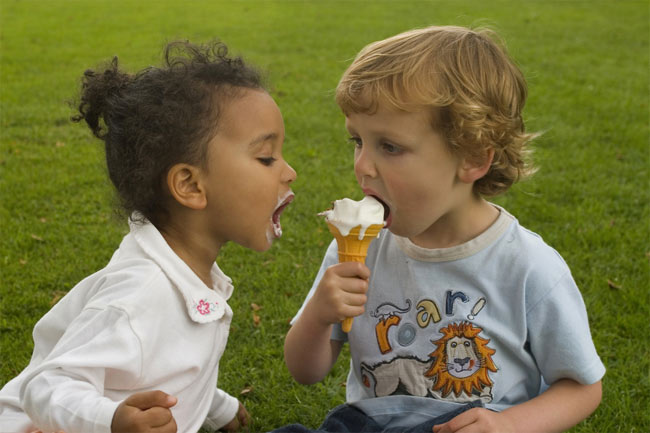Sweet Tooth in Children May Be Linked to Alcoholism

Most kids won't turn down a sugary treat, but it turns out some children prefer more intense sweetness than others. Those kids drawn to sweeter-than-cola drinks are also more likely to have a family history of alcoholism and depressive symptoms, a new study finds.
"We know that sweet taste is rewarding to all kids and makes them feel good," said lead researcher Julie Mennella, a developmental psychobiologist at Monell Chemical Senses Center in Philadelphia. "In addition, certain groups of children may be especially attracted to intense sweetness due to their underlying biology."
The results, however, don't mean a child who likes ultra-sweetened foods will become an alcoholic. It's just a link between sweet preference and family members with alcoholism. "At this point, we don't know whether this higher 'bliss point' for sweets is a marker for later alcohol use," Mennella said.
Either way, the link between sweets and alcohol would make sense, as both activate many of the same reward circuits in the brain, the researchers say. And since sugar can be a mood booster, depressed kids may be drawn to it to help them feel better.
How sweet?
In the study, Mennella and her colleagues had 300 children ages 5 to 12 taste five levels of table sugar in water and choose which they preferred most. The participants answered questions about depression and their mothers provided information about family alcohol use.
Nearly half of the children had a family history of alcoholism, meaning they had a parent, sibling, grandparent, aunt or uncle who had been diagnosed with alcohol dependence. About 25 percent of the kids reported depressive symptoms.
Get the world’s most fascinating discoveries delivered straight to your inbox.
The 37 children who had both a family history of alcoholism and had depressive symptoms were most likely to prefer intense sweetness, with these children on average choosing water with 24 percent sugar, or about 14 teaspoons in a cup of water. That's more than twice the concentration of sugar in a typical soda, the researchers say.
Other children preferred the 18-percent sugar mixture on average.
Another part of the current study tested sugar's pain-reducing effects by having kids hold either water or sugar in their mouths while keeping their hand submerged in cold water. Non-depressed kids with sugar in their mouths kept their hands submerged 36 percent longer than kids tasting water. That same effect wasn't found for the depressed group of kids.
"It may be that even higher levels of sweetness are needed to make depressed children feel better," Mennella said.
Why we like sugar
The results could help scientists design strategies for getting kids to reduce their refined sugar intake, Mennella said. That could be tough since overall, kids are innately drawn to sweets more than adults.
"The liking for sweets was designed to attract us to foods that were higher in energy, like fruits," Mennella told LiveScience. And so it makes sense for children to crave sugary foods, which long ago would have been healthy items, such as fruits. "We didn't evolve in the environment that we live in now where we have all of these refined sugars," Mennella said.
But the new results suggest some kids like sweets even more than their sugar-loving pals. "The bottom line is, telling one child to cut out sweets is going to be a lot harder than telling another child," Mennella said.
The research, which is published in the journal Addiction, was funded by the National Institute on Alcohol Abuse and Alcoholism and the National Institute of Child Health and Human Development.
Jeanna Bryner is managing editor of Scientific American. Previously she was editor in chief of Live Science and, prior to that, an editor at Scholastic's Science World magazine. Bryner has an English degree from Salisbury University, a master's degree in biogeochemistry and environmental sciences from the University of Maryland and a graduate science journalism degree from New York University. She has worked as a biologist in Florida, where she monitored wetlands and did field surveys for endangered species, including the gorgeous Florida Scrub Jay. She also received an ocean sciences journalism fellowship from the Woods Hole Oceanographic Institution. She is a firm believer that science is for everyone and that just about everything can be viewed through the lens of science.


